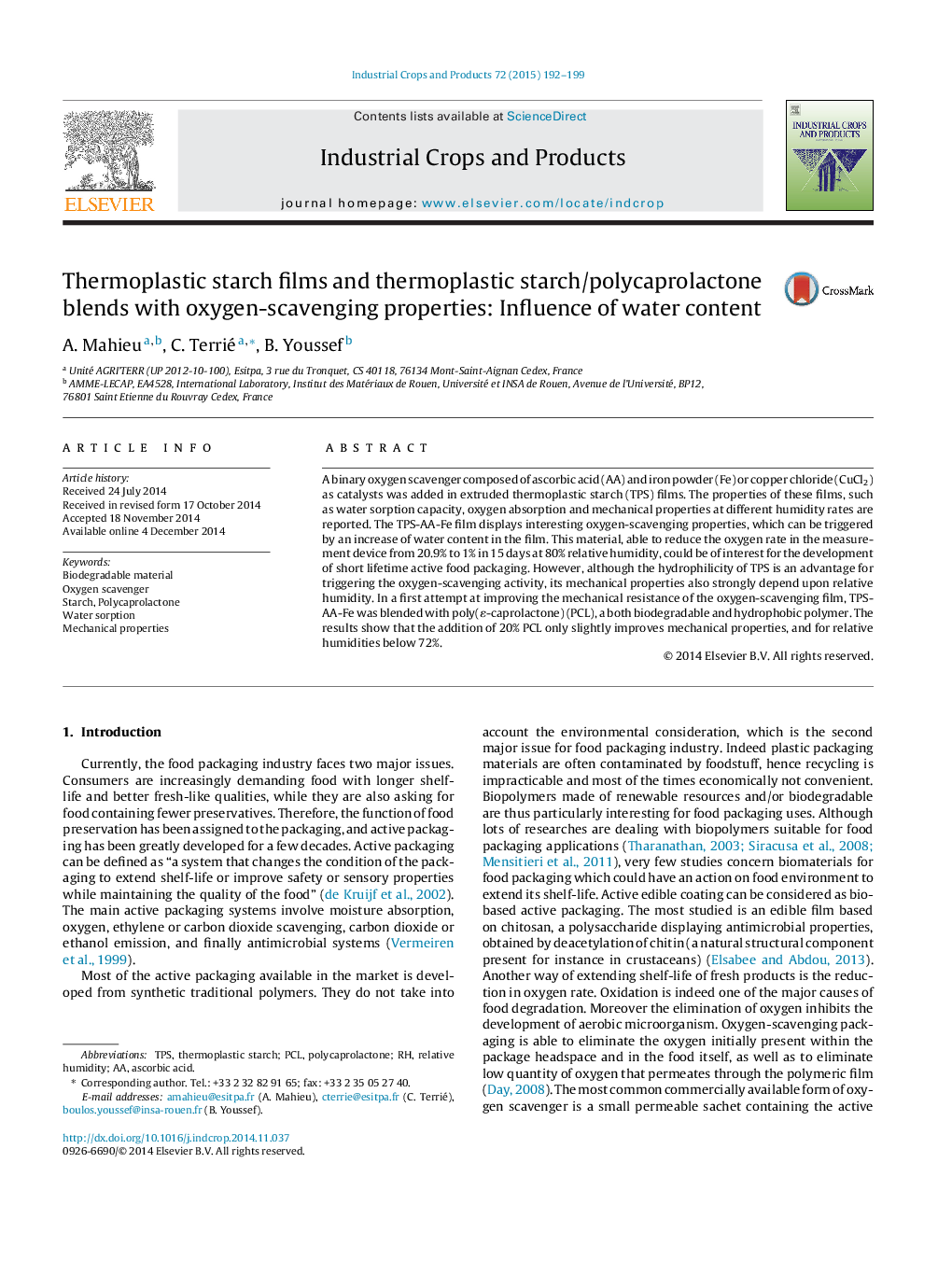| Article ID | Journal | Published Year | Pages | File Type |
|---|---|---|---|---|
| 4512788 | Industrial Crops and Products | 2015 | 8 Pages |
•Oxygen-scavenging films were obtained by adding ascorbic acid to thermoplastic starch.•TPS-AA-Fe can absorb 13.5 mL of O2 per gram of dry film after 15 days at 80% RH.•O2 absorption can be activated by increasing relative humidity.•Blending with PCL slightly improves mechanical properties, but only for RH < 72%.
A binary oxygen scavenger composed of ascorbic acid (AA) and iron powder (Fe) or copper chloride (CuCl2) as catalysts was added in extruded thermoplastic starch (TPS) films. The properties of these films, such as water sorption capacity, oxygen absorption and mechanical properties at different humidity rates are reported. The TPS-AA-Fe film displays interesting oxygen-scavenging properties, which can be triggered by an increase of water content in the film. This material, able to reduce the oxygen rate in the measurement device from 20.9% to 1% in 15 days at 80% relative humidity, could be of interest for the development of short lifetime active food packaging. However, although the hydrophilicity of TPS is an advantage for triggering the oxygen-scavenging activity, its mechanical properties also strongly depend upon relative humidity. In a first attempt at improving the mechanical resistance of the oxygen-scavenging film, TPS-AA-Fe was blended with poly(ɛ-caprolactone) (PCL), a both biodegradable and hydrophobic polymer. The results show that the addition of 20% PCL only slightly improves mechanical properties, and for relative humidities below 72%.
